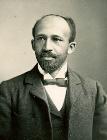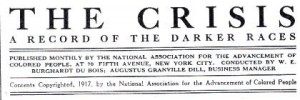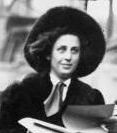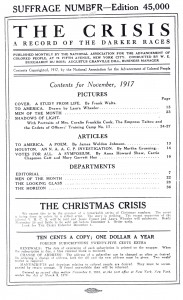Martha Gruening
Gruening was an activist, educator, and writer who championed causes for civil rights and labor movements. Her brother, Ernest, was governor for the Alaska Territory and later a senator for the state. The daughter of a prominent New York physician and a graduate of Smith College, she also earned a law degree from New York University. She wrote and helped edit The Dawn, a pacifist magazine, and in 1919 purchased The Mill House in Marlboro, New York, to establish a Libertarian school for children of all races, specifically her adopted black son, David Butt. (The Mill House is the oldest house on the National Register of Historic Places in Orange County and the earliest surviving Jewish residence in North America. It has been continuously inhabited for more than 280 years.)
 From 1911-1914 Gruening was a secretary for Herbert Seligmann, director of public relations for the National Association for the Advancement of Colored People. She worked with W.E.B. DuBois on an investigation into the East St. Louis riots in July 1917 and the next month went to Houston in response to the violence there involving the 24th Infantry.
From 1911-1914 Gruening was a secretary for Herbert Seligmann, director of public relations for the National Association for the Advancement of Colored People. She worked with W.E.B. DuBois on an investigation into the East St. Louis riots in July 1917 and the next month went to Houston in response to the violence there involving the 24th Infantry.
Read Gruening’s story for The Crisis here
“The primary cause of the Houston riot was the habitual brutality of the white police officers of Houston in their treatment of colored people.”
— Martha Gruening, from her report for the NAACP
W.E.B. Du Bois arrived in New York City at age 42 in mid-summer of 1910 to assume his dual position as director of publicity and research and editor of a publication for the recently organized National Association for the Advancement of Colored People. DuBois created a quarterly journal, The Crisis, which debuted in November 1910.
He said, “The object of this publication is to set forth those facts and arguments which show the danger of race prejudice, particularly as manifested today toward colored people. It takes its name from the fact that the editors believe that this is a critical time in the history of the advancement of men.”
The magazine was an influential forum for news, opinion, history, politics, and culture seeking “to educate and challenge its readers about issues that continue to plague African Americans and other communities of color.”
Among the numerous established writers whose work appeared in The Crisis were James Weldon Johnson, H. L. Mencken, J. E. Spingarn, Langston Hughes, and Zora Neale Hurston.
Writing in the 40th anniversary issue of the magazine (March, 1951), noted journalist George S. Schuyler said: “Then came The Crisis, like a clear, strong breeze cutting through the miasma of Negrophobism. Here for the first time with brilliance, militancy, facts, photographs and persuasiveness, a well-edited magazine challenged the whole concept of white supremacy then nationally accepted….It is no exaggeration to say that the early Crisis created an intellectual revolution in the most out-of-way places….It became the bible of the militant Negro of the day and ‘must’ reading for the growing number of his white champions.”
DuBois was the publication’s driving force until his resignation in 1934.



